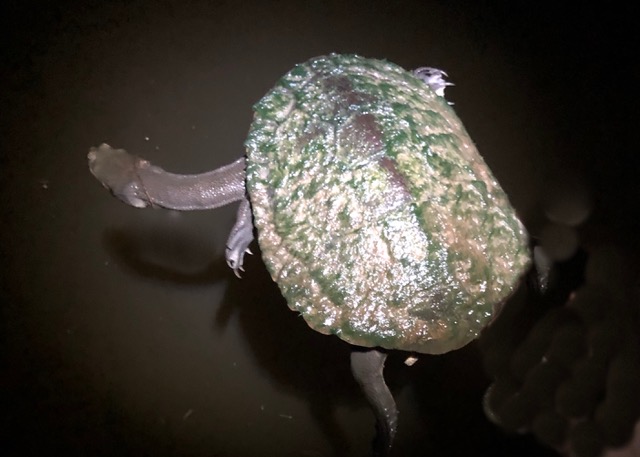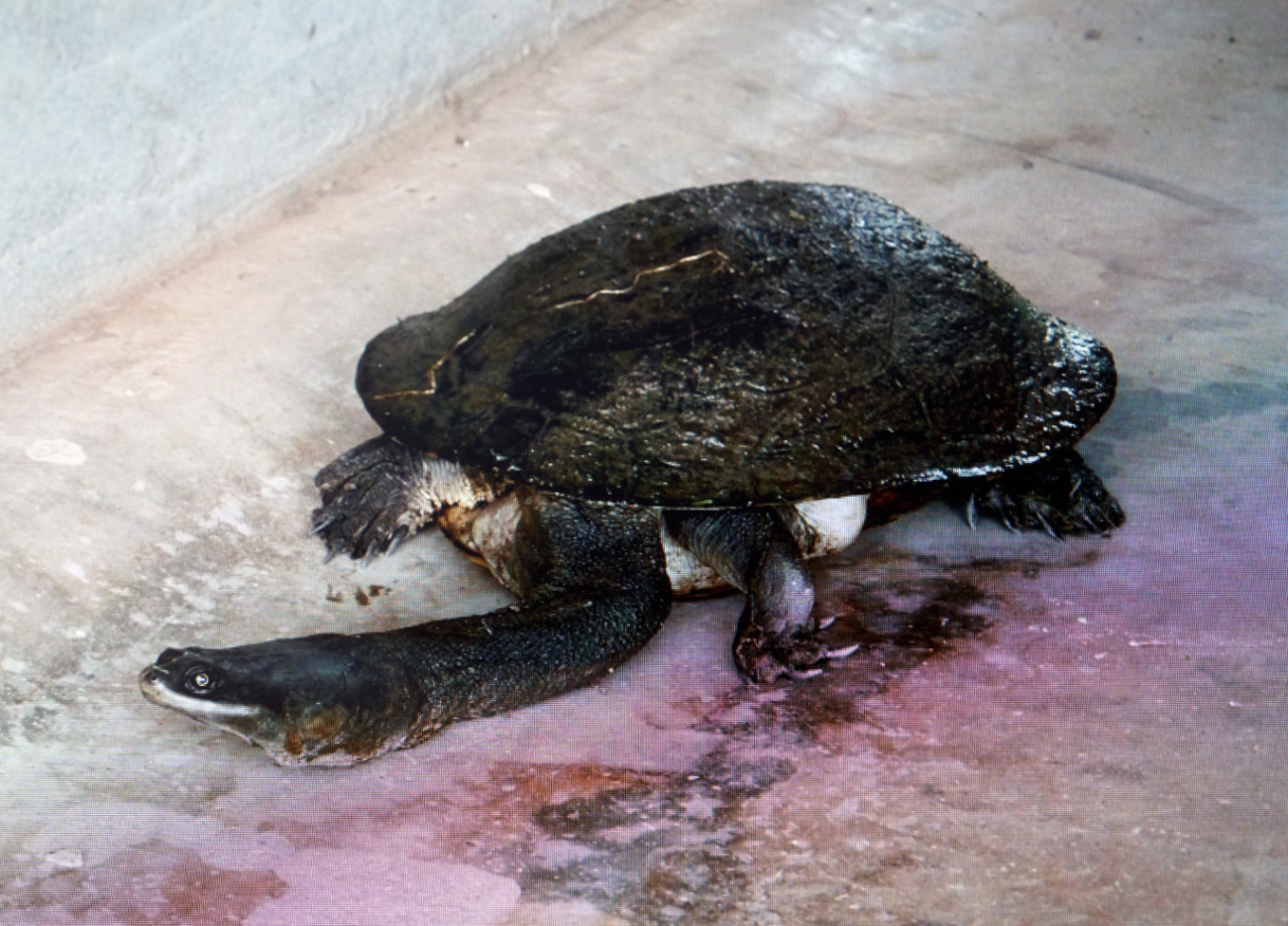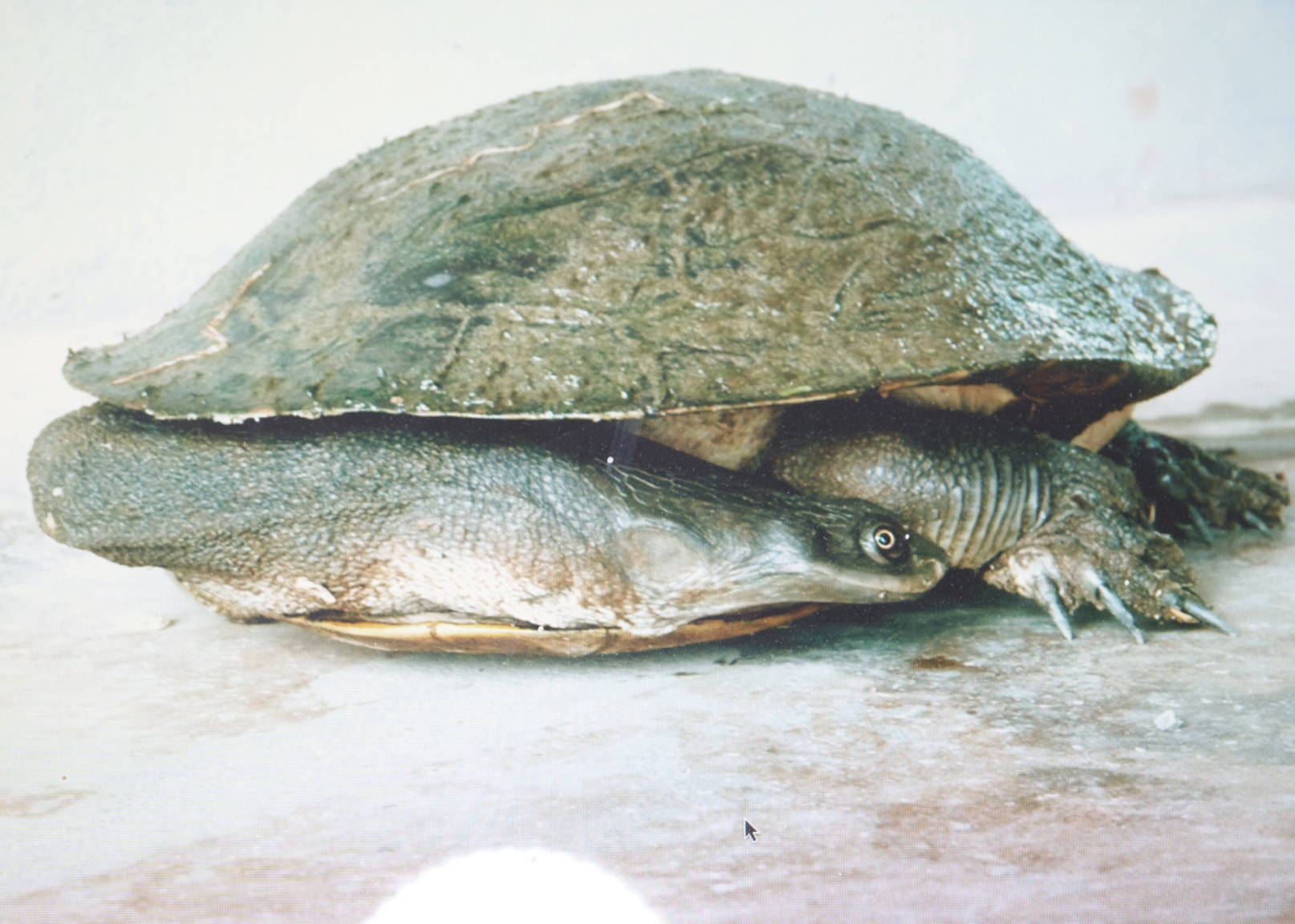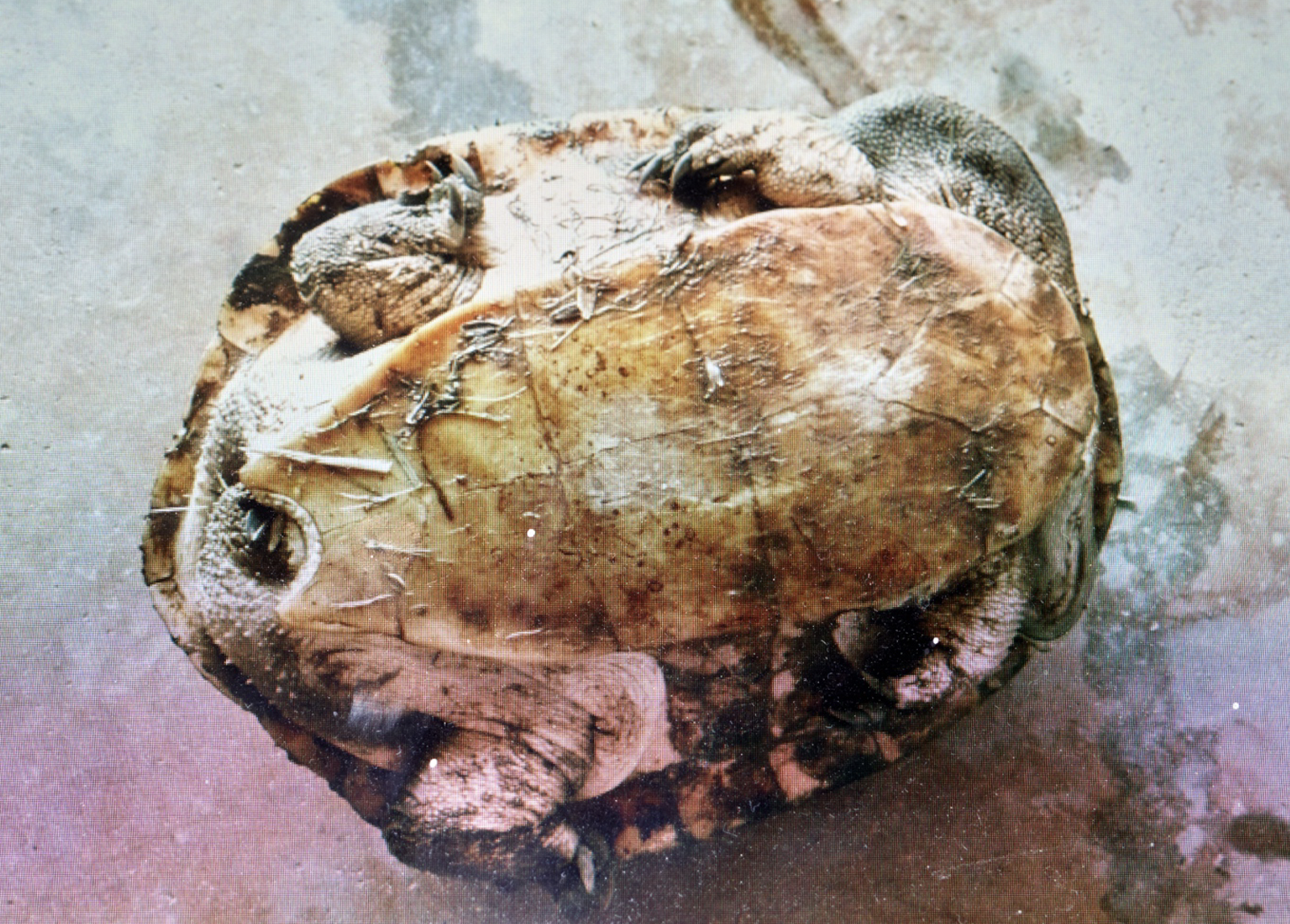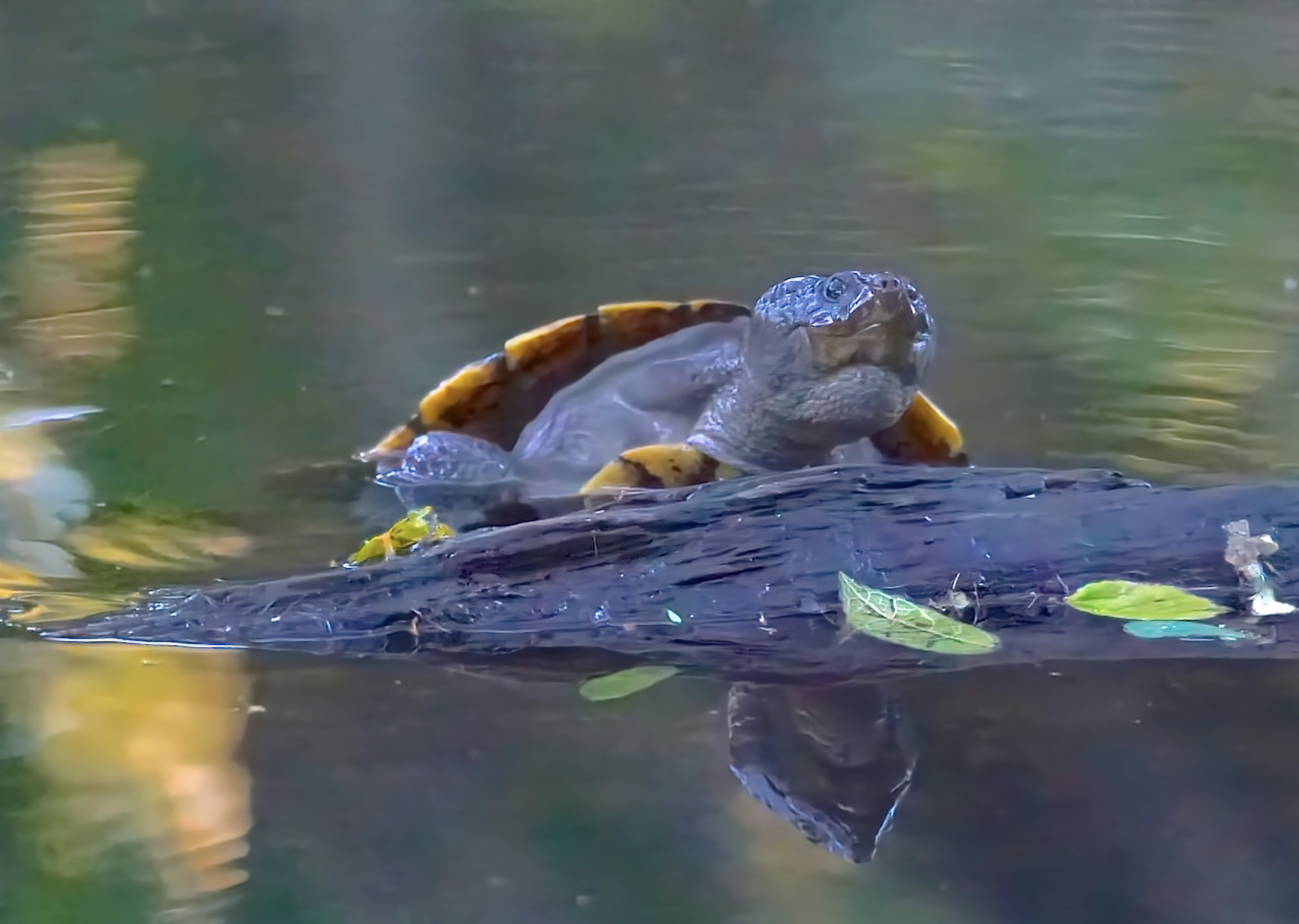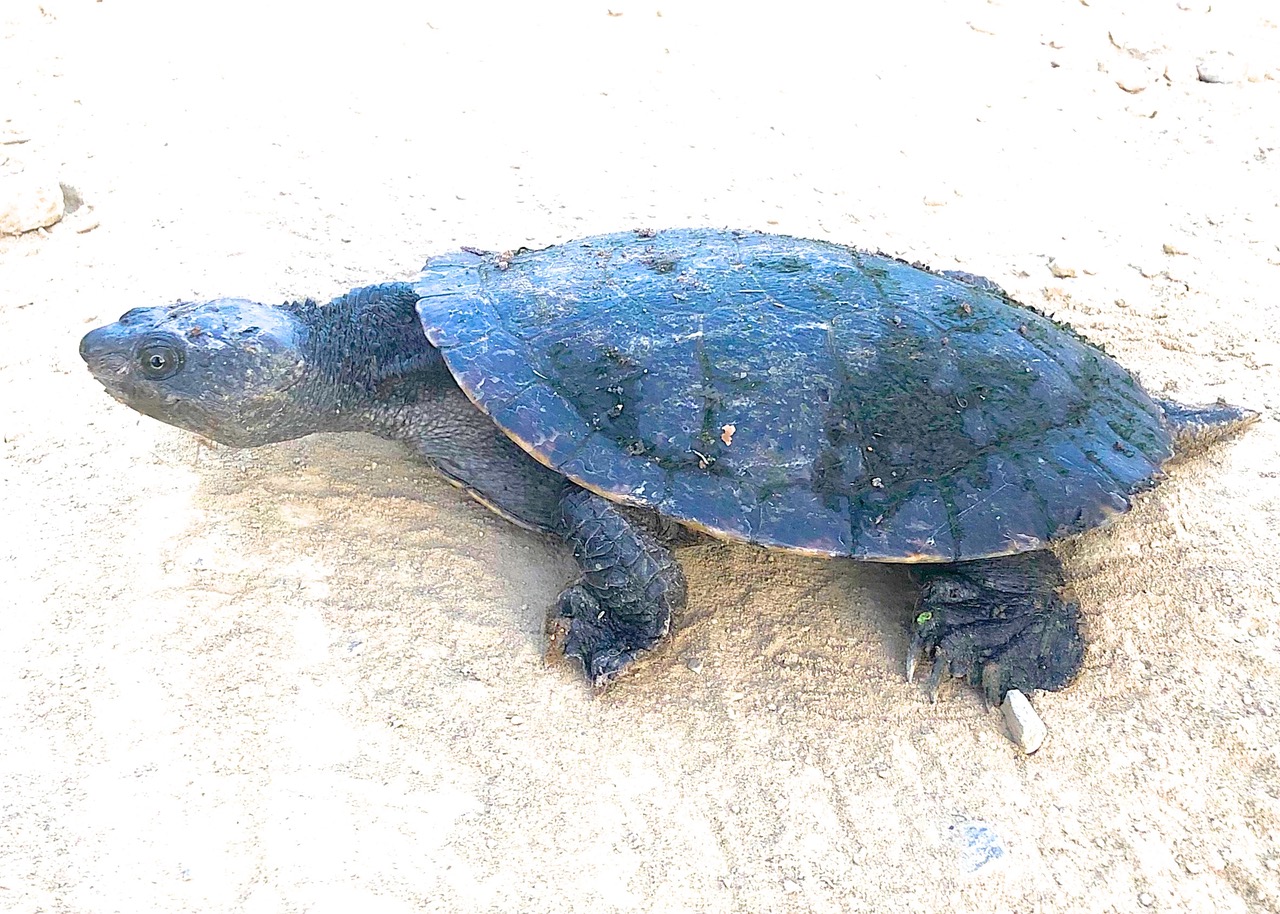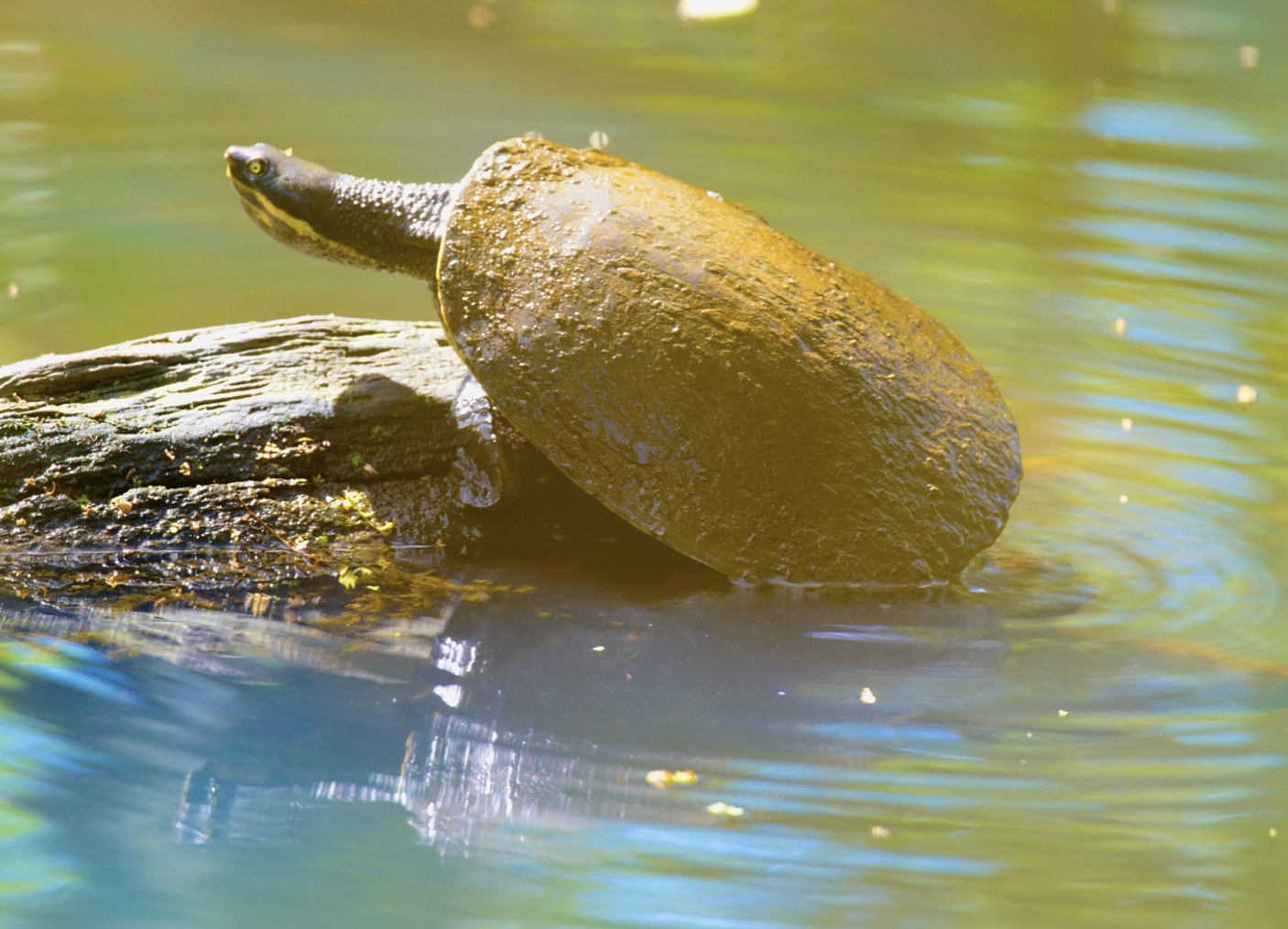Freshwater turtles in our catchment
There are two species of Long-necked and two species of Short-necked Turtles found in the Moggill Creek Catchment. They are all well established in Gold and Moggill Creeks and in the Gold Creek Reservoir.
DESCRIPTION:
Top (carapace) usually black often covered by algae.
Underneath (plastron) yellowish, scales widely edged with black .
Head and limbs grey above and lighter underneath. About as long as the carapace.
The head is moderately flattened. The long neck is covered in pointed tubercles and can be retracted beneath the front of the carapace.
Found mainly in slower flowing water and in dams rather than rocky streams.
Generally breeds during spring laying 8 to 24 eggs in hard earth. Young appear between January and March.
Can emit an offensive odour when handled.
Status – common
DESCRIPTION:
Grey, brown or blackish carapace which get more humped as it ages. The largest of our Turtles.
The plastron is quite narrow and is evenly whitish with no edge markings which is a clear distinction from the Eastern Long-necked Turtle.
The head is wide and very flattened and with the neck longer than the Carapace. Can have a mass of algae on top which is a useful camouflage when resting on the bottom.
Description:
Top of carapace brown and strongly yellow underneath. Strongly serrated at rear. Plastron whitish with orange-yellow upper side. Neck is short with distinctive pointed tubercles.
Description:
Most distinctive feature is a strong yellow stripe that starts at the mouth and extends along half the length of the neck. The Carapace is rounded, dark and often covered in algae. The plastron is whitish. The neck is smooth in contrast to the Saw-shell Turtle.
Very common in Gold and Moggill Creeks. Feeds on a wide variety of aquatic insects and plants

